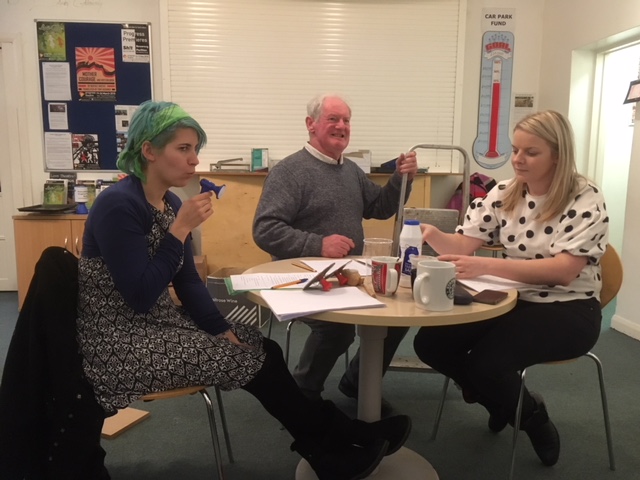Co-director Matthew Whitney tells us about the unsusual approach to sound effects used in our production of Recovery Position, one half of this year's Progress Premieres.
Why Foley?
When looking at the original script of Recovery Position it resembled a monologue with a lot of sound effects. The sounds are integral to Francis’ inner world, whether they comfort him or damage his mental state. To give an immediacy, we decided to create some of the sound effects live. Not only would that create an intimacy for Francis to feed off, but also to give the other cast members who would otherwise have minimal interjections of dialogue a chance to be involved in every aspect of the play.

During initial rehearsals, we tentatively laid out our plans; we would supplement recorded sounds with live sounds on stage. The cast had other ideas. They were rebelling already…in the best possible way. They decided if we were doing the sound effects live we would do every sound effect, from trains, to fairgrounds, to cricket matches. It became a brilliant and uniting experience for the cast and ourselves as directors as we worked together for weeks testing out noises and finding the right sound or combination of sounds. Often in a play the actors are their characters and as much as they work as a team their characters will oppose each other. Recovery Position is a unique experience where every cast member is united in purpose as being a continuous part of Francis’ physical and mental landscape.
But what exactly is a Foley artist? The name itself derives from Jack Foley, who worked in Hollywood in the 1920s during the transitional period between silent movies and talkies. There was a short period where silent movies had sound effects added to them, before the full transition to talkies was made. Jack Foley was the pioneer of these sounds. What became the Foley technique is still used to this day. In post-production once the film was cut Jack Foley would perform sound effects in time with the action on the film. Whether this was walking, horse’s hooves or a door slamming, each had to be performed in exact synchronicity with the film. Jack Foley continued his craft until his death in 1967.
This is the technique still used in film and TV to this day. The joy for a Foley artist is finding a new sound and with the most unlikely of objects. Leather gloves become the wings of a bird; burning plastic bin liners make the drip of a candle; a heavy staple gun, a gunshot. But Foley has moved beyond radio, film and TV, there are also Foley artists becoming involved with video games as they become more realistic with the advent of motion capture for animations.
With our production of Recovery Position we have taken this even further to create all the sound effects apart from the dialogue and music (although the Foley artists are in control of playing each track). The artists are also in full view of the audience so the creation of sound and strange variety of objects used can be observed and comprehended by the audience. All the sounds and tricks are laid bare much as Francis’ internal world is exposed.
